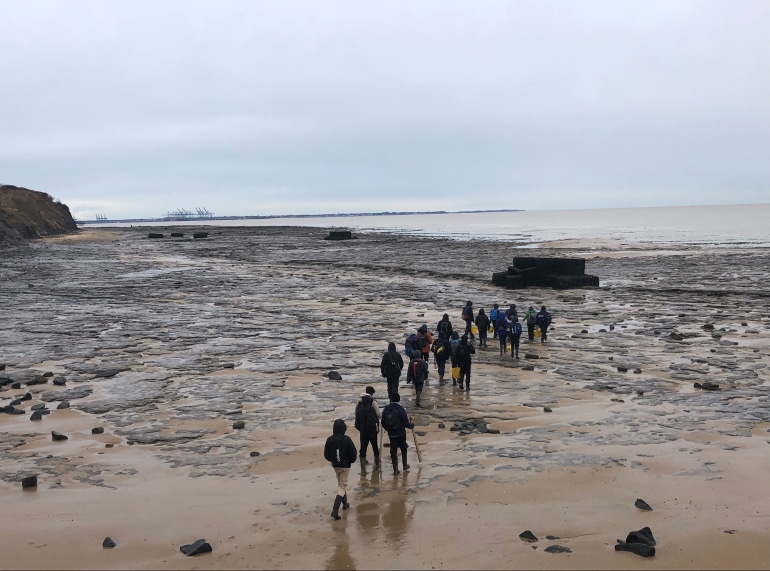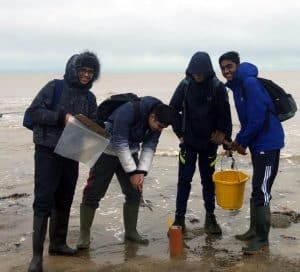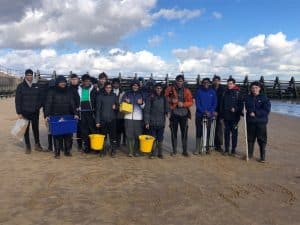Going, going, gone: geographers see for themselves the effects of rapid coastal erosion

Sixth-formers observed striking evidence of coastal erosion during a three-day residential trip to Essex.
 The 20 Year 12 geographers were able to inspect two World War II pillboxes that had fallen off the cliff at Walton-on-the-Naze and are now exposed by the sea at low tide.
The 20 Year 12 geographers were able to inspect two World War II pillboxes that had fallen off the cliff at Walton-on-the-Naze and are now exposed by the sea at low tide.
Head of Geography Emily Parry added that other historical attractions date much further back than the war.
“This coast’s unique geology has fossilised shark teeth and the remains of ancient mangrove forest, which are now hidden within the soft clay. The boys enjoyed searching for (and claiming to have found!) them.
“For many students it was the first time on a School trip of this kind for over three years and they enjoyed the change of scene and of pace.”
During the trip, the boys completed fieldwork to investigate sediment size, infiltration rate and gradient at multiple sites along Walton Beach.
 The party stayed in the Grade I-listed Flatford Mill. Today owned by the National Trust and leased to the Field Studies Council, the mill was owned by successive generations of the Constable family and was the subject of one of John Constable’s most famous paintings, completed in 1816.
The party stayed in the Grade I-listed Flatford Mill. Today owned by the National Trust and leased to the Field Studies Council, the mill was owned by successive generations of the Constable family and was the subject of one of John Constable’s most famous paintings, completed in 1816.
One of the boys, Abhiraj Singh, said that the visit had brought their Coasts unit of work to life, while his classmate, Mithil Parmar, added: “It was a fantastic three-day residential, giving us a break from the classroom environment and a chance to see Geography in action.”
